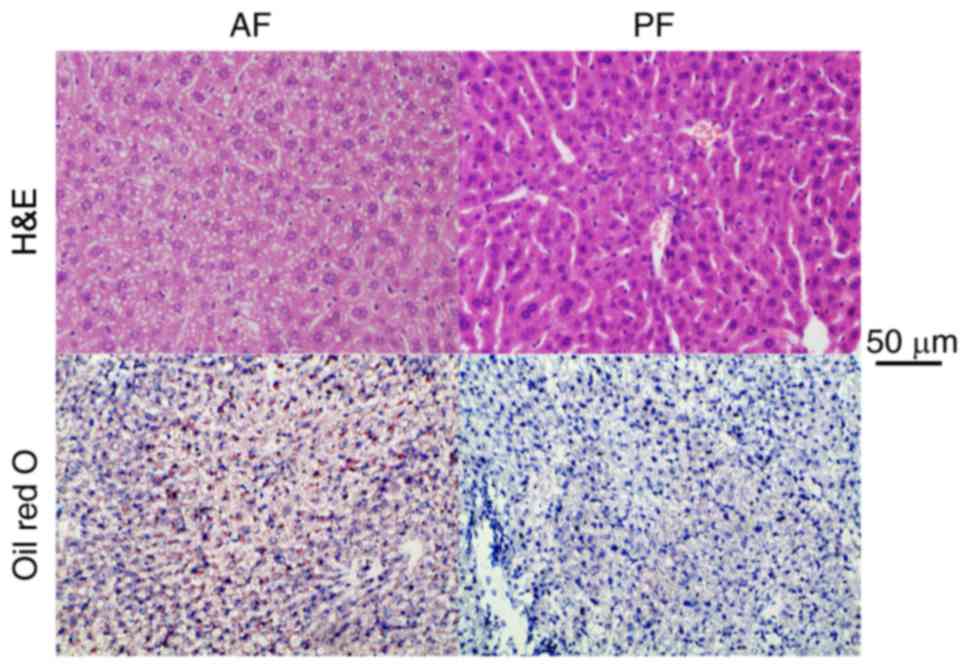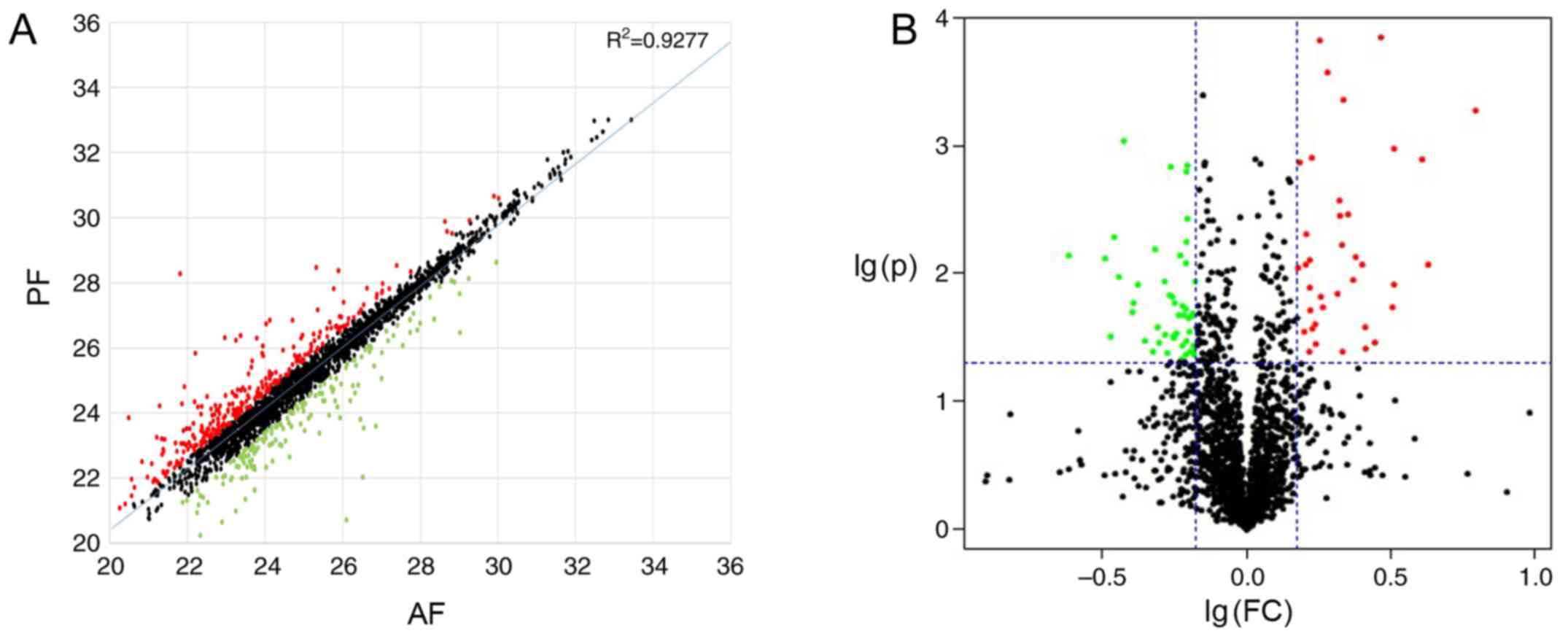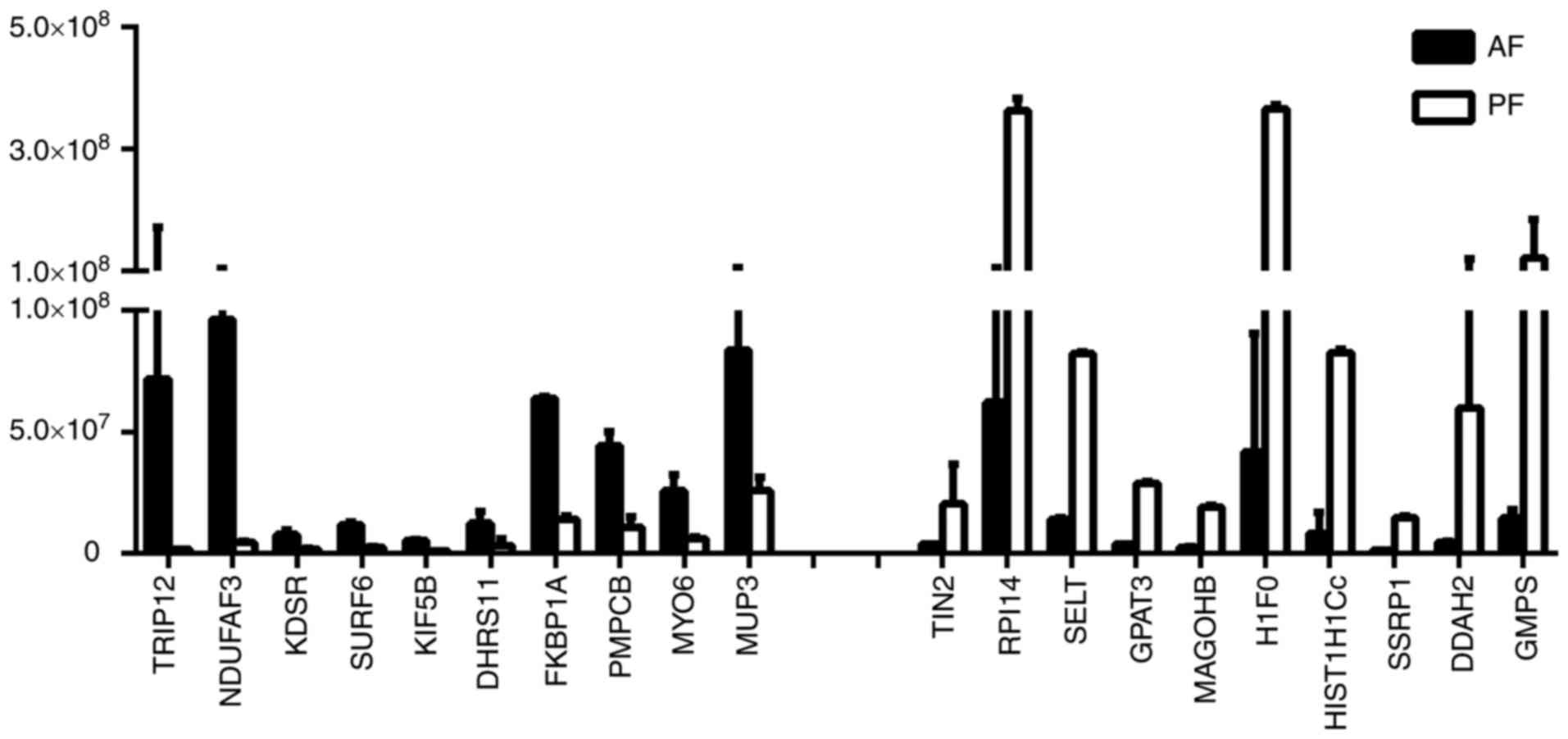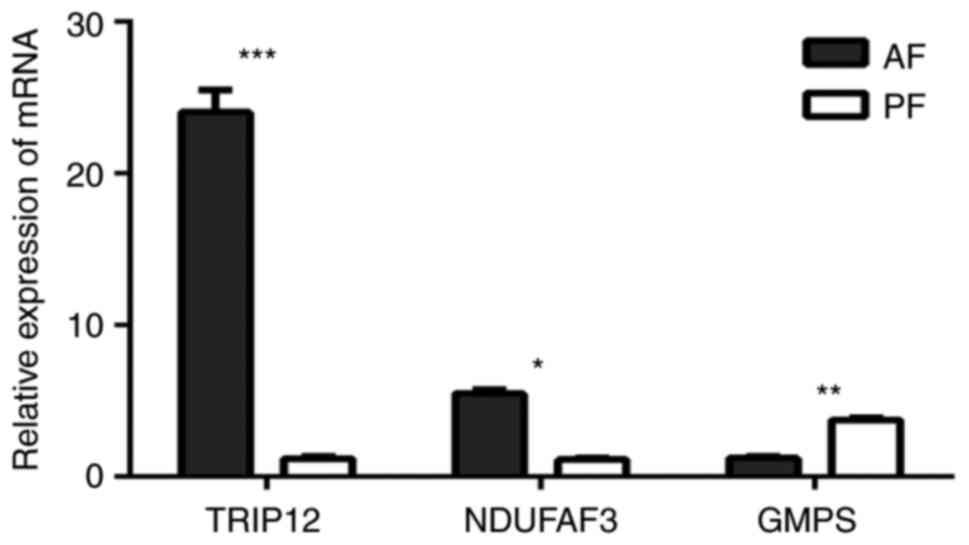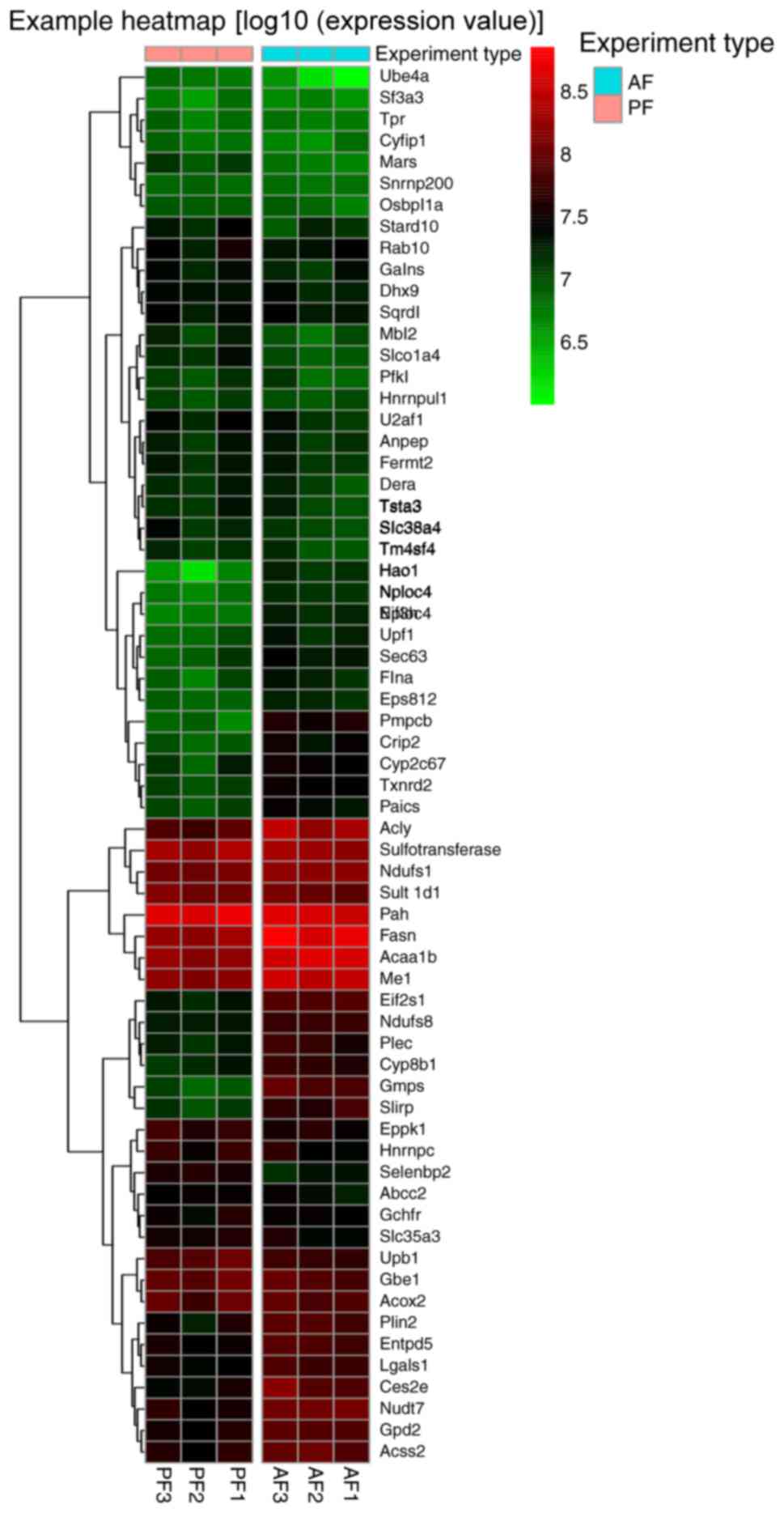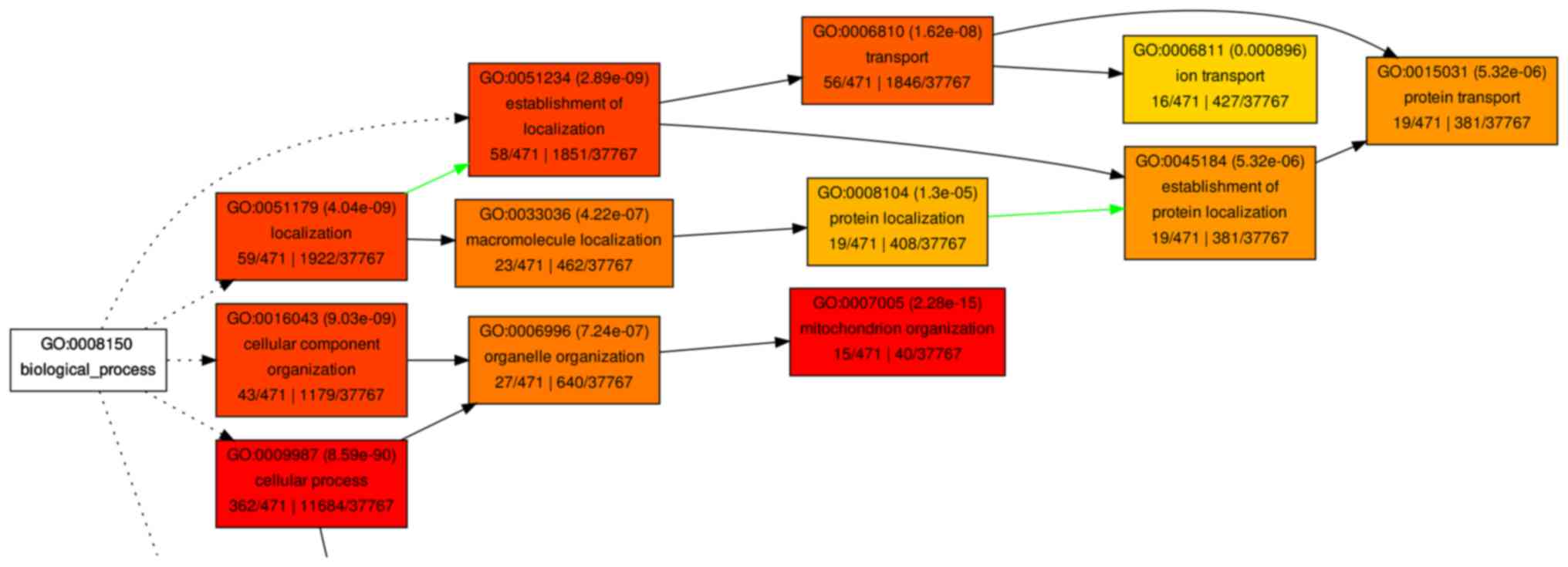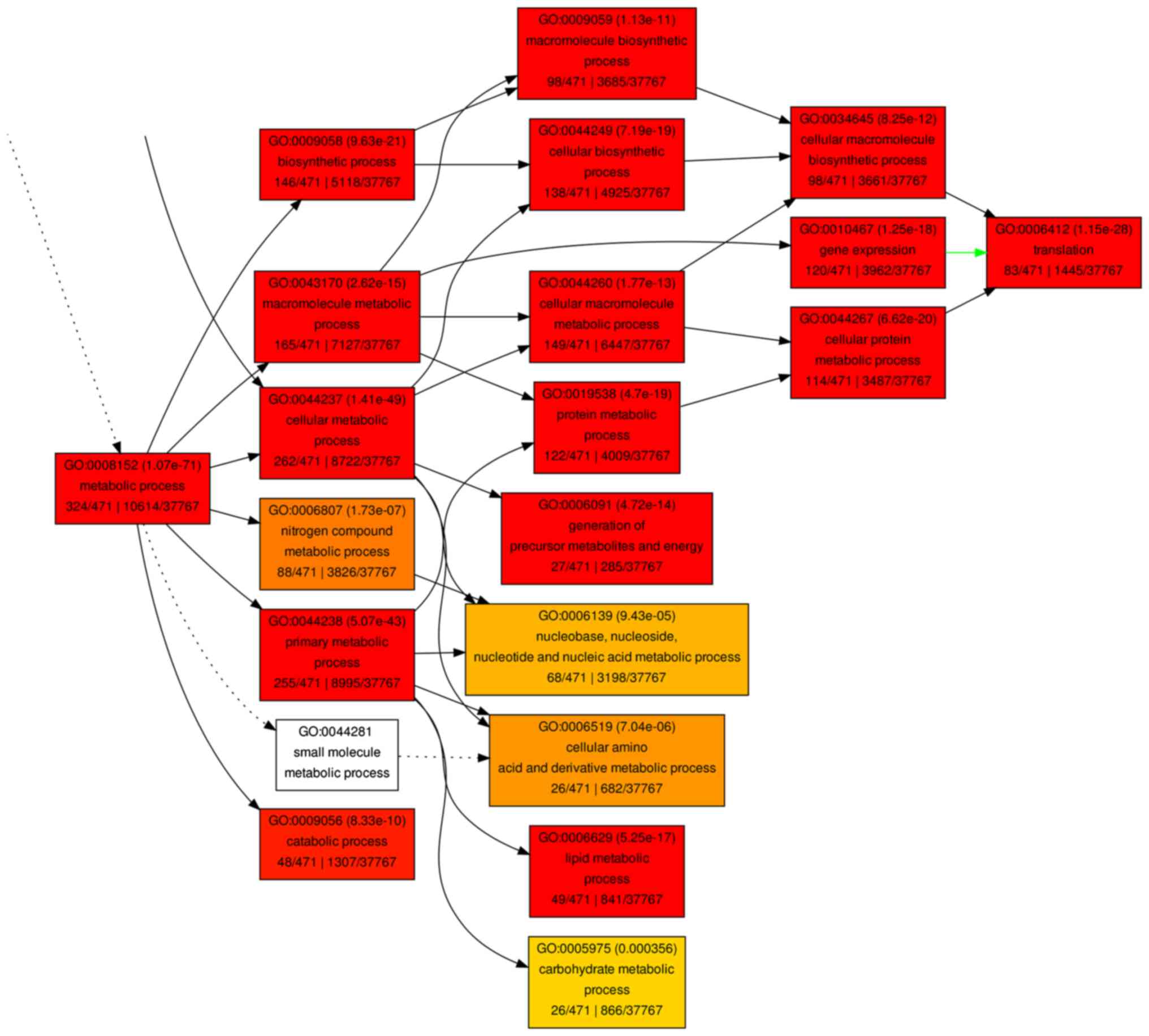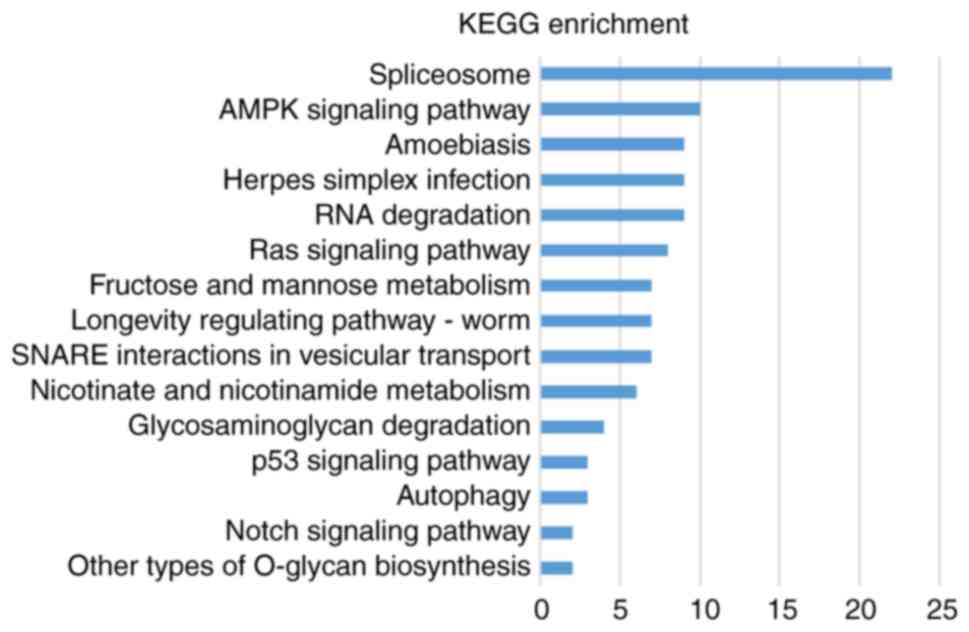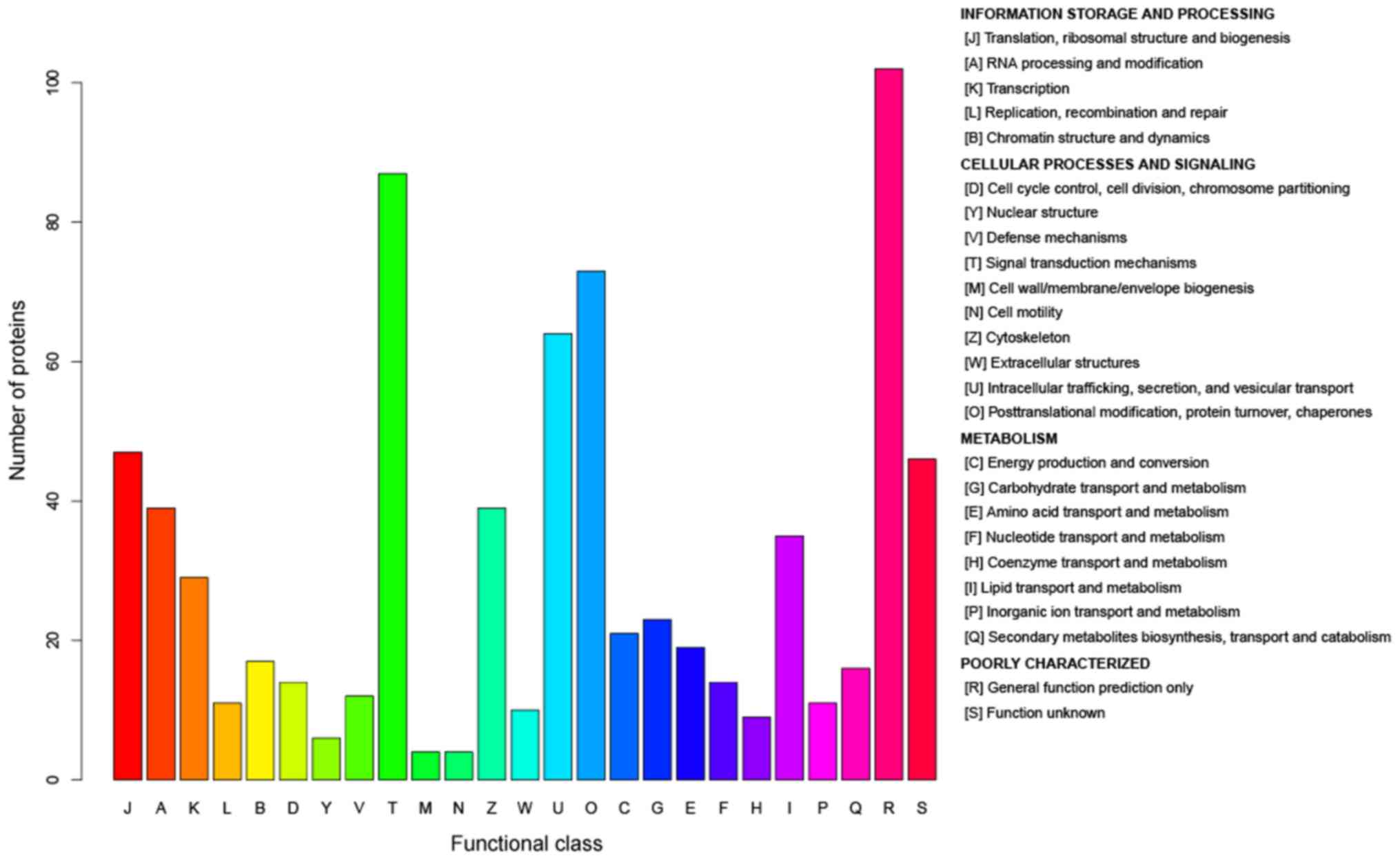|
1
|
Rehm J, Samokhvalov AV and Shield KD:
Global burden of alcoholic liver diseases. J Hepatol. 59:160–168.
2013. View Article : Google Scholar : PubMed/NCBI
|
|
2
|
Allampati S and Mullen KD: Long-term
management of alcoholic liver disease. Clin Liver Dis. 20:551–562.
2016. View Article : Google Scholar : PubMed/NCBI
|
|
3
|
Dugum M and McCullough A: Diagnosis and
management of alcoholic liver disease. J Clin Transl Hepatol.
3:109–116. 2015. View Article : Google Scholar : PubMed/NCBI
|
|
4
|
Hoek JB, Cahill A and Pastorino JG:
Alcohol and mitochondria: A dysfunctional relationship.
Gastroenterology. 122:2049–2063. 2002. View Article : Google Scholar : PubMed/NCBI
|
|
5
|
Ceni E, Mello T and Galli A: Pathogenesis
of alcoholic liver disease: Role of oxidative metabolism. World J
Gastroenterol. 20:17756–17772. 2014. View Article : Google Scholar : PubMed/NCBI
|
|
6
|
Szabo G: Gut-liver axis in alcoholic liver
disease. Gastroenterology. 148:30–36. 2015. View Article : Google Scholar : PubMed/NCBI
|
|
7
|
Titz B, Elamin A, Martin F, Schneider T,
Dijon S, Ivanov NV, Hoeng J and Peitsch MC: Proteomics for systems
toxicology. Comput Struct Biotechnol J. 11:73–90. 2014. View Article : Google Scholar : PubMed/NCBI
|
|
8
|
Tzeng SC and Maier CS: Label-free
proteomics assisted by affinity enrichment for elucidating the
chemical reactivity of the liver mitochondrial proteome toward
adduction by the lipid electrophile 4-hydroxy-2-nonenal (HNE).
Front Chem. 4:22016. View Article : Google Scholar : PubMed/NCBI
|
|
9
|
Bantscheff M, Lemeer S, Savitski MM and
Kuster B: Quantitative mass spectrometry in proteomics: Critical
review update from 2007 to the present. Anal Bioanal Chem.
404:939–965. 2012. View Article : Google Scholar : PubMed/NCBI
|
|
10
|
Nan YM, Kong LB, Ren WG, Wang RQ, Du JH,
Li WC, Zhao SX, Zhang YG, Wu WJ, Di HL, et al: Activation of
peroxisome proliferator activated receptor alpha ameliorates
ethanol mediated liver fibrosis in mice. Lipids Health Dis.
12:112013. View Article : Google Scholar : PubMed/NCBI
|
|
11
|
Bailey SM, Andringa KK, Landar A and
Darley-Usmar VM: Proteomic approaches to identify and characterize
alterations to the mitochondrial proteome in alcoholic liver
disease. Methods Mol Biol. 447:369–380. 2008. View Article : Google Scholar : PubMed/NCBI
|
|
12
|
Zhan C, Yan L, Wang L, Jiang W, Zhang Y,
Xi J, Jin Y, Chen L, Shi Y, Lin Z and Wang Q: Landscape of
expression profiles in esophageal carcinoma by the cancer genome
atlas data. Dis Esophagus. 29:920–928. 2016. View Article : Google Scholar : PubMed/NCBI
|
|
13
|
Yan L, Zhan C, Wu J and Wang S: Expression
profile analysis of head and neck squamous cell carcinomas using
data from the cancer genome atlas. Mol Med Rep. 13:4259–4265. 2016.
View Article : Google Scholar : PubMed/NCBI
|
|
14
|
Livak KJ and Schmittgen TD: Analysis of
relative gene expression data using real-time quantitative PCR and
the 2(-Delta Delta C(T)) method. Methods. 25:402–408. 2001.
View Article : Google Scholar : PubMed/NCBI
|
|
15
|
Gene Ontology Consortium, . The Gene
Ontology (GO) project in 2006. Nucleic Acids Res. 34:D322–D326.
2006. View Article : Google Scholar : PubMed/NCBI
|
|
16
|
Kanehisa M, Goto S, Kawashima S, Okuno Y
and Hattori M: The KEGG resource for deciphering the genome.
Nucleic Acids Res. 32:D277–D280. 2004. View Article : Google Scholar : PubMed/NCBI
|
|
17
|
Kim DH, Lee EM, Do SH, Jeong DH and Jeong
KS: Changes of the cytoplasmic proteome in response to alcoholic
hepatotoxicity in rats. Int J Mol Sci. 16:18664–18682. 2015.
View Article : Google Scholar : PubMed/NCBI
|
|
18
|
Lee SJ, Lee DE, Kang JH, Nam MJ, Park JW,
Kang BS, Lee DS, Lee HS and Kwon OS: New potential biomarker
proteins for alcoholic liver disease identified by a comparative
proteomics approach. J Cell Biochem. 118:1189–11200. 2017.
View Article : Google Scholar : PubMed/NCBI
|
|
19
|
Tran M, Yang Z, Liangpunsakul S and Wang
L: Metabolomics analysis revealed distinct cyclic changes of
metabolites altered by chronic ethanol-plus-binge andshp
deficiency. Alcohol Clin Exp Res. 40:2548–2556. 2016. View Article : Google Scholar : PubMed/NCBI
|
|
20
|
Ki SH, Park O, Zheng M, Morales-Ibanez O,
Kolls JK, Bataller R and Gao B: Interleukin-22 treatment
ameliorates alcoholic liver injury in a murine model of
chronic-binge ethanol feeding: Role of signal transducer and
activator of transcription 3. Hepatology. 52:1291–1300. 2010.
View Article : Google Scholar : PubMed/NCBI
|
|
21
|
Bertola A, Mathews S, Ki SH, Wang H and
Gao B: Mouse model of chronic and binge ethanol feeding (the NIAAA
model). Nat Protoc. 8:627–637. 2013. View Article : Google Scholar : PubMed/NCBI
|
|
22
|
Choi G and Runyon BA: Alcoholic hepatitis:
A clinician's guide. Clin Liver Dis. 16:371–385. 2012. View Article : Google Scholar : PubMed/NCBI
|
|
23
|
Mathurin P and Lucey MR: Management of
alcoholic hepatitis. Drug Ther Bull. 56:S39–S45. 2012.
|
|
24
|
Patel VJ, Thalassinos K, Slade SE,
Connolly JB, Crombie A, Murrell JC and Scrivens JH: A comparison of
labeling and label-free mass spectrometry-based proteomics
approaches. J Proteome Res. 8:3752–3759. 2009. View Article : Google Scholar : PubMed/NCBI
|
|
25
|
Bantscheff M, Lemeer S, Savitski MM and
Kuster B: Quantitative mass spectrometry in proteomics: Critical
review update from 2007 to the present. Anal Bioanal Chem.
404:939–965. 2012. View Article : Google Scholar : PubMed/NCBI
|
|
26
|
Sprecher H: New advances in fatty-acid
biosynthesis. Nutrition. 12 1 Suppl:S5–S7. 1996. View Article : Google Scholar : PubMed/NCBI
|
|
27
|
Pace CP and Stankovich MT:
Oxidation-reduction properties of short-chain acyl-CoA
dehydrogenase: Effects of substrate analogs. Arch Biochem Biophys.
313:261–266. 1994. View Article : Google Scholar : PubMed/NCBI
|
|
28
|
Ladero JM, Martinez C, Garcia-Martin E,
Fernández-Arquero M, López-Alonso G, de la Concha EG, Díaz-Rubio M
and Agúndez JA: Polymorphisms of the glutathione S-transferases
mu-1 (GSTM1) and theta-1 (GSTT1) and the risk of advanced alcoholic
liver disease. Scand J Gastroenterol. 40:348–353. 2005. View Article : Google Scholar : PubMed/NCBI
|
|
29
|
Eaton S, Record CO and Bartlett K:
Multiple biochemical effects in the pathogenesis of alcoholic fatty
liver. Eur J Clin Invest. 27:719–722. 1997. View Article : Google Scholar : PubMed/NCBI
|
|
30
|
Cunningham CC and Bailey SM: Ethanol
consumption and liver mitochondria function. Biol Signals Recept.
10:271–282. 2001. View Article : Google Scholar : PubMed/NCBI
|
|
31
|
Chacko BK, Srivastava A, Johnson MS,
Benavides GA, Chang MJ, Ye Y, Jhala N, Murphy MP, Kalyanaraman B
and Darley-Usmar VM: Mitochondria-targeted ubiquinone (MitoQ)
decreases ethanol-dependent micro and macro hepatosteatosis.
Hepatology. 54:153–163. 2011. View Article : Google Scholar : PubMed/NCBI
|
|
32
|
Sugimoto K and Takei Y: Pathogenesis of
alcoholic liver disease. Hepatol Res. 47:70–79. 2016. View Article : Google Scholar : PubMed/NCBI
|
|
33
|
Williams JA, Ni H, Ding Y and Ding W:
Parkin regulates mitophagy and mitochondrial function to protect
against alcohol-induced liver injury and steatosis in mice. Am J
Physiol Gastrointest Liver Physiol. 309:G324–G340. 2015. View Article : Google Scholar : PubMed/NCBI
|
|
34
|
Lieber CS and DeCarli LM: Ethanol
oxidation by hepatic microsomes: Adaptive increase after ethanol
feeding. Science. 162:917–918. 1968. View Article : Google Scholar : PubMed/NCBI
|
|
35
|
Lieber CS and DeCarli LM: Hepatic
microsomal ethanol-oxidizing system. In vitro characteristics and
adaptive properties in vivo. J Biol Chem. 245:2505–2512.
1970.PubMed/NCBI
|
|
36
|
Robin M, Sauvage I, Grandperret T,
Descatoire V, Pessayre D and Fromenty B: Ethanol increases
mitochondrial cytochrome P450 2E1 in mouse liver and rat
hepatocytes. Febs Lett. 579:6895–6902. 2005. View Article : Google Scholar : PubMed/NCBI
|
|
37
|
Cieślak A, Kelly I, Trottier J, Verreault
M, Wunsch E, Milkiewicz P, Poirier G, Droit A and Barbier O:
Selective and sensitive quantification of the cytochrome P450 3A4
protein in human liver homogenates through multiple reaction
monitoring mass spectrometry. Proteomics. 16:2827–2837. 2016.
View Article : Google Scholar : PubMed/NCBI
|
|
38
|
Bradford BU, Kono H, Isayama F, Kosyk O,
Wheeler MD, Akiyama TE, Bleye L, Krausz KW, Gonzalez FJ, Koop DR
and Rusyn I: Cytochrome P450 CYP2E1, but not nicotinamide adenine
dinucleotide phosphate oxidase, is required for ethanol-induced
oxidative DNA damage in rodent liver. Hepatology. 41:336–344. 2005.
View Article : Google Scholar : PubMed/NCBI
|
|
39
|
Lieber CS: The discovery of the microsomal
ethanol oxidizing system and its physiologic and pathologic role.
Drug Metab Rev. 36:511–529. 2004. View Article : Google Scholar : PubMed/NCBI
|
|
40
|
Nieto N: Stimulation and proliferation of
primary rat hepatic stellate cells by cytochrome P450 2E1-derived
reactive oxygen species. Hepatology. 35:62–73. 2002. View Article : Google Scholar : PubMed/NCBI
|
|
41
|
Bridle K, Cheung TK, Murphy T, Walters M,
Anderson G, Crawford DG and Fletcher LM: Hepcidin is down-regulated
in alcoholic liver injury: Implications for the pathogenesis of
alcoholic liver disease. Alcohol Clin Exp Res. 30:106–112. 2006.
View Article : Google Scholar : PubMed/NCBI
|
|
42
|
Suzuki Y, Saito H, Suzuki M, Hosoki Y,
Sakurai S, Fujimoto Y and Kohgo Y: Up-regulation of transferrin
receptor expression in hepatocytes by habitual alcohol drinking is
implicated in hepatic iron overload in alcoholic liver disease.
Alcohol Clin Exp Res. 26:26S–31S. 2002. View Article : Google Scholar : PubMed/NCBI
|
|
43
|
Kohgo Y, Ohtake T, Ikuta K, Suzuki Y,
Torimoto Y and Kato J: Dysregulation of systemic iron metabolism in
alcoholic liver diseases. J Gastroenterol Hepatol. 23 Suppl
1:S78–S81. 2008. View Article : Google Scholar : PubMed/NCBI
|
|
44
|
Bai T, Yang Y, Yao YL, Sun P, Lian LH, Wu
YL and Nan JX: Betulin alleviated ethanol-induced alcoholic liver
injury via SIRT1/AMPK signaling pathway. Pharmacol Res. 105:1–12.
2016. View Article : Google Scholar : PubMed/NCBI
|
|
45
|
Angiuoli SV, Matalka M, Gussman A, Galens
K, Vangala M, Riley DR, Arze C, White JR, White O and Fricke WF:
CloVR: A virtual machine for automated and portable sequence
analysis from the desktop using cloud computing. BMC
Bioinformatics. 12:3562011. View Article : Google Scholar : PubMed/NCBI
|



